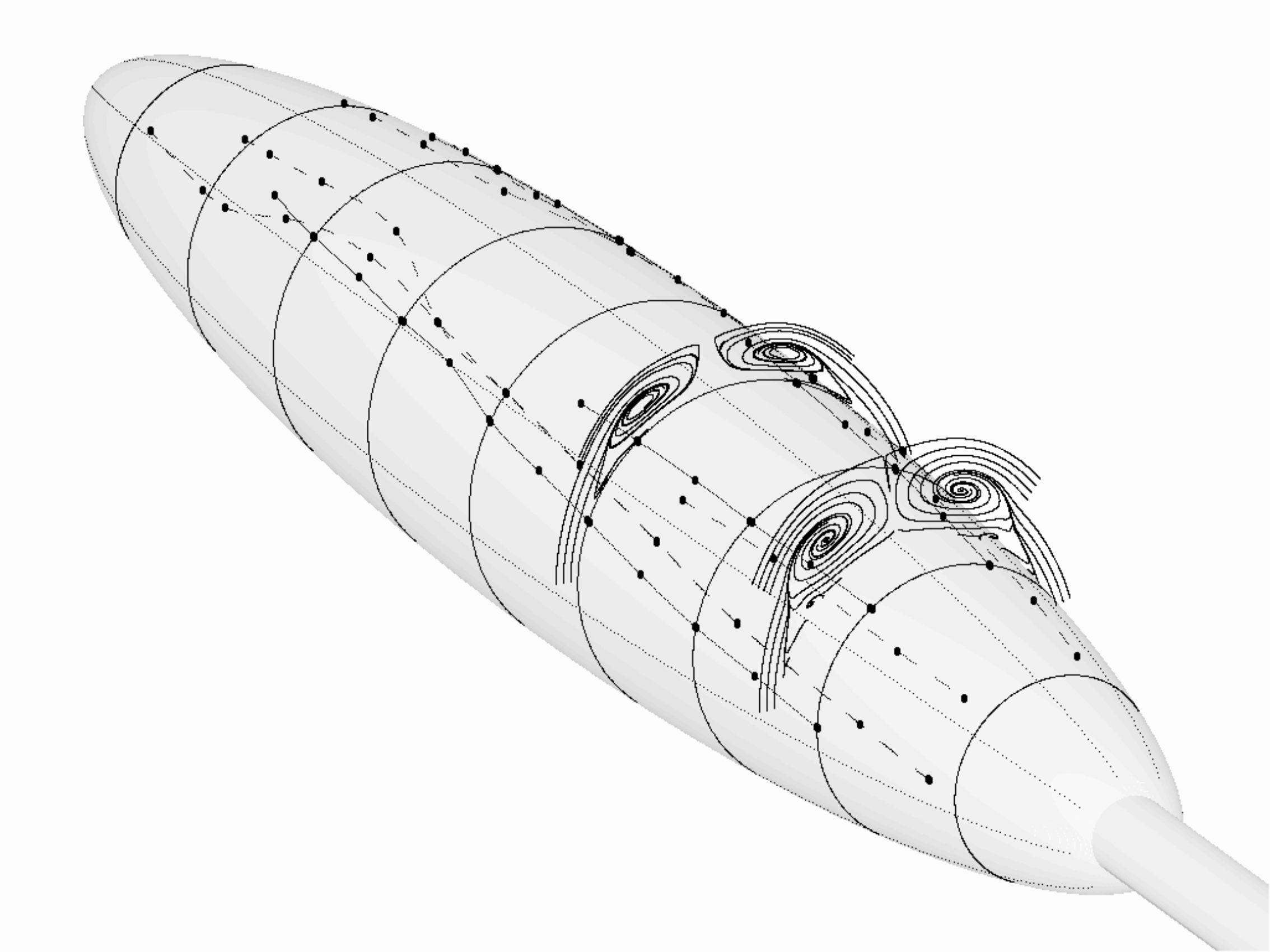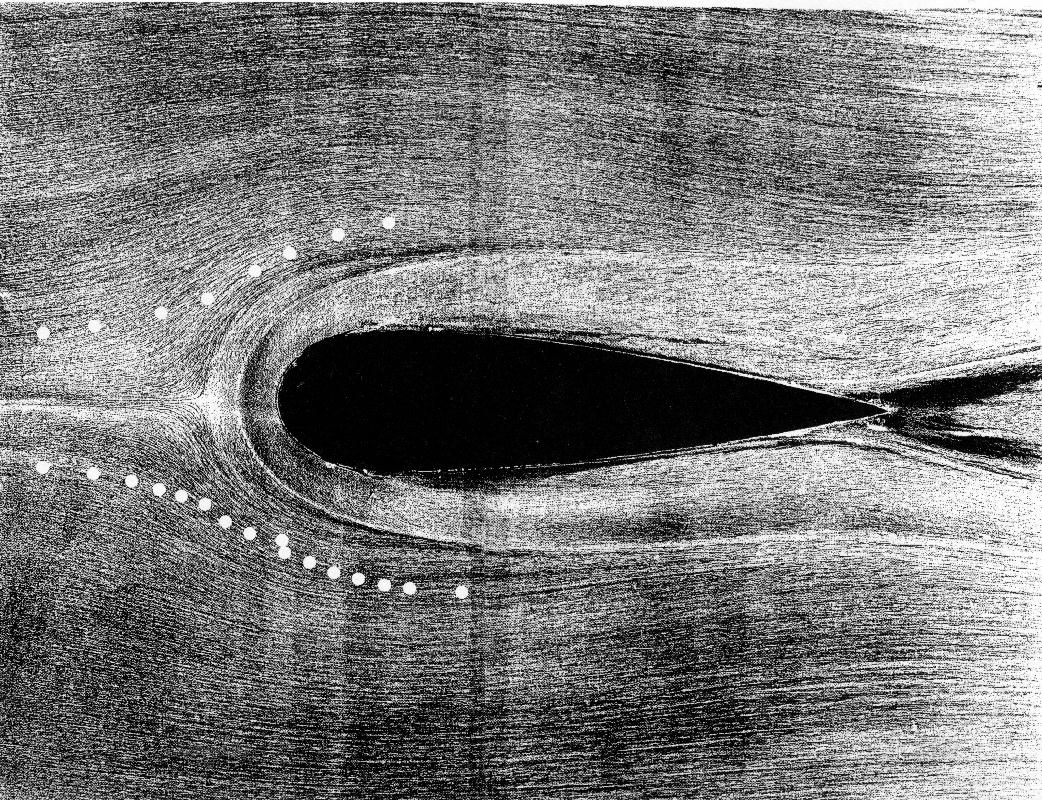 |
DEPARTMENT OF AEROSPACE AND OCEAN |


ABSTRACT
Pressure fluctuations in turbulent boundary layers are a source of noise and vibration that can accelerate structural fatigue. Pressure fluctuations and their correlation with velocity fluctuations is an important diffusive mechanism of turbulence transport. The present approach was to study the statistics of both the surface pressure and the velocity field through new measurements of the fluctuating surface pressure and existing measurements of the velocity field and the covariance of the surface pressure and fluctuating velocity components.
Measurements were made in three types of flows. The first type of flow was a zero pressure gradient, two-dimensional, turbulent boundary layer (Req = 7300 and Req = 23400). The two-dimensional flows serve as a baseline for comparison to the other three-dimensional flows and validate the experimental techniques used in the present study through comparison with existing measurements. The second type of flow was a three-dimensional, pressure-driven, turbulent boundary layer that forms away from a wing-body junction. Two of this type of boundary layer were studiedľ Req = 5940 and Req = 23200. The third type of flow was the separating flow about the leeside of a 6:1 prolate spheroid at angle of attack. Measurements were made at two angles of attack, a = 10° and a = 20°, and two axial locations, x/L = 0.600 and x/L = 0.772, in this type of flow.
The spectral power density of surface pressure fluctuations (p) beneath the separating flow on the leeside of a 6:1 prolate spheroid at 10° angle of attack collapse when normalized using viscous scales. However, the spectral power density of surface pressure fluctuations beneath highly three-dimensional flow contain nearly constant spectral levels within a middle to high frequency range. The nearly constant spectral levels are due to a lack of overlapping frequency structure between the large-scale motions and the viscous-dominated motions since each of these types of motion may have different flow histories due to the three-dimensional flow structure. This effect amplifies the importance of the middle frequency range to p' as compared to two-dimensional flows. In terms of instrumentation, accurate p' measurements in a three-dimensional flow require accurate high frequency (f > 20 kHz) p measurements.
The lack of similarity in the shape of the spectral power density preclude a direct extension of "universal" generalizations that are true for surface pressure fluctuations beneath two-dimensional boundary layers. The resulting RMS surface pressure fluctuation distributions reflect the importance of the high frequency wall region contributions. Scaling parameters for the p spectra beneath three-dimensional flows must incorporate local flow structure in order to be successful. Analysis based on the Poisson equation shows that variation of the high frequency spectral levels are related to the variation in near-wall mean velocity gradients and v2 structure. In the 6:1 prolate spheroid flow, near regions of crossflow separation there is a local minimum in RMS surface pressure fluctuations, whereas around reattachments and under the large shed vortices there is a local maximum in RMS surface pressure fluctuations.
Measurements of the correlation coefficient between surface pressure
and velocity fluctuations show that there can be sources of p away
from the wall in three-dimensional flows. Sources of p away from
the wall are significant in terms of fluid-structure interaction since
they contribute low frequency fluctuations. Structures typically have low
resonant frequencies. Sources of p away from the wall are also significant
in terms of radiated sound since they are likely to interact with the free-stream
and be radiated away as sound.
RELATED PUBLICATIONS
(Contain analysis of this data)
| Goody, M. C., Simpson, R. L., and Chesnakas, C. J., "Separated Flow Surface Pressure Fluctuations and Pressure-Velocity Correlations on a Prolate Spheroid," AIAA Journal, Vol. 38, No. 2 (Feb 2000), pp.266-274. | |
| Goody, M. C., and Simpson, R. L., "An Experimental Investigation of Surface Pressure Fluctuations Beneath Two and Three-Dimensional Turbulent Boundary Layers," accepted for publication in the AIAA Journal. |
DATA AVAILABLE FOR DOWNLOADING
The following files contain power spectra of surface pressure fluctuations. The *.EXE files are self-extracting zip files in PC format. Just download the files to your IBM-compatible computer and run the programs to extract the data files and their descriptions. The organization and nomenclature used in the data files and some additional flow documentation are given in the *.PDF files as indicated below. Each of the *.PDF files are included in each of the self-extracting zip files. However, you will need the Adobe Acrobat Reader in order to read the *.PDF files. The Adobe Acrobat Reader is available from Adobe free of charge by clicking on this link: Get Acrobat Reader .
Each data file contains the spectral power density of surface pressure fluctuations in both dimensional and non-dimensional form.
Flow Away from a Wing-Body Junction and a 2-D (ÑP=0) at comparable Req
- Flow Documentation (WB-DOC.PDF : 26 KB)
- Contains relevant boundary layer parameters (e.g. flow velocity, boundary layer thickness, etc.)
- Data file organization (WB-HEAD.PDF : 54 KB)
- Explains the data file name convention and column headings of the data files
- Data Files
- Req = 7300 (2-D), 5940 (3-D) (WB-LORE.EXE : 144 KB)
- Contains 23 files that occupy 321 KB when uncompressed
- Req = 23400 (2-D), 23200 (3-D) (WB-HIRE.EXE : 149 KB)
- Contains 23 files that occupy 335 KB when uncompressed
Flow about the Leeside of a 6:1 Prolate Spheroid at Angle of Attack
- Flow Documentation (PS-DOC.PDF : 26 KB)
- Contains relevant boundary layer parameters (e.g. flow velocity, boundary layer thickness, etc.)
- Data file organization (PS-HEAD.PDF : 34 KB)
- Explains the data file name convention and column headings of the data files
- Data Files
- a = 10°, x/L = 0.600 (PS-16.EXE : 93 KB)
- Contains 21 files that occupy 179 KB when uncompressed
- a = 10°, x/L = 0.772 (PS-17.EXE : 94 KB)
- Contains 21 files that occupy 179 KB when uncompressed
- a = 20°, x/L = 0.600 (PS-26.EXE : 93 KB)
- Contains 21 files that occupy 179 KB when uncompressed
- a = 20°, x/L = 0.772 (PS-27.EXE : 92 KB)
- Contains 21 files that occupy 176 KB when uncompressed
For more information, e-mail Professor Roger L. Simpson.
Send comments and suggestions to
webmaster@aoe.vt.edu
Copyright © 2000 AOE Dept., Virginia Tech All rights reserved world wide